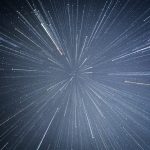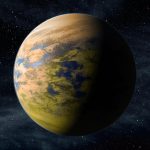Yes, the universe can expand faster than light
An expanding universe complicates this picture just a little bit, because the universe absolutely refuses to be straightforward.
Objects are still emitting light, and that...
Scientists discover what really powers Venus’s wild, planet-encircling winds
Imagine storms fiercer than the strongest hurricanes on Earth, blowing nonstop all the way around an entire planet.
This is exactly what happens on Venus,...
Astronomers spot first stars billions of years after they were supposed to die
Over the course of billions of years, the universe has steadily been evolving.
Thanks to the expansion of the universe, we are able to “see”...
Hunting for wandering black holes in dwarf galaxies
Tracking down black holes at the center of dwarf galaxies has proven difficult.
In part that is because they have a tendency to “wander” and...
How dark energy changed cosmology forever
Let’s rewind the clock back…oh, I don’t know, let’s say a hundred years. It was 1917, and Einstein had just developed his general theory...
How colorful microbes in clouds could help us find life on other planets
Clouds may spoil a picnic or block our view of the stars, but they could also help scientists discover life on distant planets.
A new...
Astronomers crack the case of mysterious radio relics in galaxy clusters
Galaxy clusters are the largest structures held together by gravity in the universe.
Each cluster contains hundreds or even thousands of galaxies, along with hot...
Our solar system is moving three times faster than expected
A new study has found that our solar system is racing through the universe much faster than current theories predict.
This surprising discovery, led by...
The rust that could reveal alien life
Iron rusts.
On Earth, this common chemical reaction often signals the presence of something far more interesting than just corroding metal for example, living microorganisms...
Astronomers discover the Pleiades is part of a giant hidden star family
The Pleiades, also known as the “Seven Sisters,” is one of the most recognizable sights in the night sky.
For centuries, people around the world...










